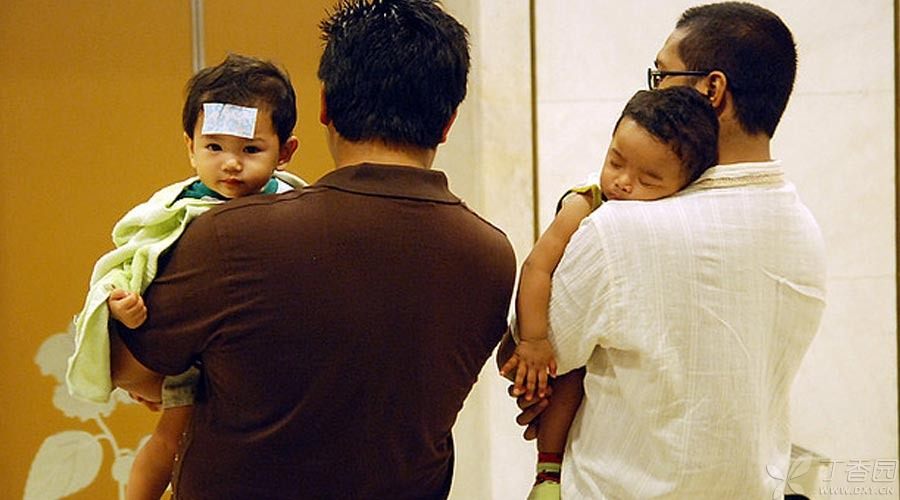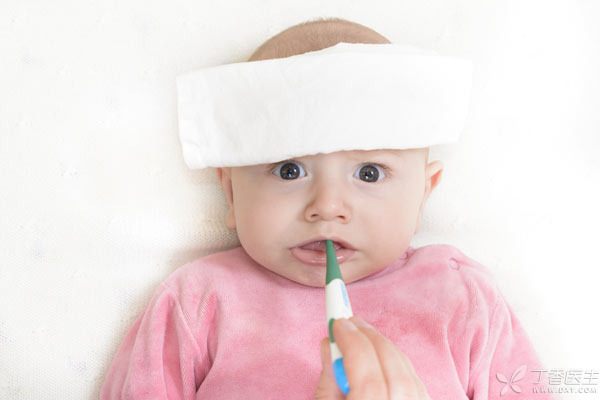
Give the child a bath and apply ice bags to his head when he has a fever. This is effective and has no side effects. It is really impossible to take antipyretics again. Do you think so?
Congratulations, it’s all wrong.
At present, no authoritative professional organization regards these methods as the first choice for fever reduction. Why?
What kind of children need to reduce fever?
In the latest guidelines of the American Academy of Pediatrics on fever reduction [1], it is repeatedly stressed that unless it is extremely high fever, fever will not cause harm to children, on the contrary, it is beneficial.
Fever with definite causes, such as serious bacterial infection, can naturally be treated for anti-infection according to the etiology. However, fever is conducive to improving children’s immunity and fighting infection, unless it is caused by obvious discomfort of children, and does not need to reduce fever.
The goal of treating fever is to improve the child’s comfort rather than to reduce the fever.
It is difficult to measure children’s comfort with objective indicators, The consensus of American experts is that children will suffer more when they are above 39 degrees (the Chinese guideline is above 38.5 degrees), Except for some children with hereditary metabolic diseases, heart and lung function diseases, epilepsy and other diseases, if the children are not obviously uncomfortable, healthy children do not need to reduce fever below 39 degrees, naturally do not need to use physical cooling methods such as bathing and ice bags, and children above 39 degrees need to reduce fever only if they are obviously uncomfortable.
Children have a fever, can parents do some what?
For babies under three months old, parents are not recommended to reduce fever by themselves, and doctors should handle it.
So for children over three months old, how to deal with fever?
1. Alternative processing methods
(1) It cannot reduce fever but can make children more comfortable, such as reducing clothes and turning on the air conditioner.
(2) It can reduce fever and improve children’s comfort, such as ibuprofen and acetaminophen.
2. Disposals not recommended
Some methods can also dissipate heat, but the effect is not good, and it may also make children feel more uncomfortable, such as blowing fans, wiping baths with warm water, applying ice bags, etc.
There are many ways to cool down physically, including taking off clothes to dissipate heat, soaking in a bath, wiping in warm water, wiping in alcohol, applying ice bags and ice, antipyretic stickers, blowing fans, turning on air conditioners, etc.

Warm water bath is a way that many parents use more, and there are also many researches on this way.
Rubbing bath is to take away heat by using the temperature difference between water and the body. If the temperature difference is small, it will have no effect. If the temperature difference is large, it will cause discomfort to the body. Therefore, this method is against physiology. Moreover, many children who burn to 39 degrees or more are groggy and want to sleep. Who would be happy to be wiped away by water at this time? Many studies have also confirmed that wiping bath will cause a large proportion of children to cry and chill [2].
The purpose of treatment is to make the child not feel uncomfortable, but warm water bath may make the child feel more uncomfortable. Moreover, this cooling effect is poor and the duration is short. Naturally, it is not a good treatment method.
What do professional organizations think?
You may think that the research I quoted is not comprehensive enough, so let’s look at what professional organizations say.
(1) Guidelines for Diagnosis and Treatment of Acute Fever of Unknown Etiology among Children Aged 0 to 5 in China (Issued in November 2008):
The physical cooling effect is not as good as the antipyretic, and can be used as an auxiliary antipyretic method. When the physical cooling and antipyretic are combined, the body temperature drops faster than that of the antipyretic alone. In case of high fever, it is recommended to use the antipyretic combined with warm rubbing.
(2) Healthychildren.org [3], a popular science website under the American Academy of Pediatrics (last updated: May 2013):
In most cases, The most convenient way to make children with fever more comfortable is to take acetaminophen or ibuprofen orally. However, sometimes you may want to combine a warm water bath or just want a warm water bath. For example, if you know that your child is allergic to antipyretics or cannot tolerate it (rarely), you can choose a bath first. If your child is extremely unwell due to fever, or your child vomits, you can recommend using a bath in combination with antipyretics.
(3) Hong Kong Department of Health [4] (Last Revision Time: August 2013):
Warm water bath does not help the baby to reduce fever, but if the baby has the following conditions, many people will give the baby a warm water bath to make him feel more comfortable:
- Can’t take oral drugs; Vomiting after taking medicine; Show irritability or great discomfort.
(4) NICE (National Institute of Health and Clinical Optimization) Guidelines for < < Childhood Fever: Assessment and Preliminary Treatment under 5 Years Old > > [5] (Last Updated: May 2013):
Warm water bath is not recommended for fever treatment.
(5) Canadian Association of Pediatricians (last updated: September 2013) [6]:
It is not recommended to give children warm water bath, alcohol bath or bath.
(6) 19th Edition < < Nielsen Pediatrics > > (Published: 2011):
It is not believed that physical methods such as warm water bath and cold blanket are effective for reducing fever.
(7) American Academy of Pediatrics Guidelines for Fever and Use of Antipyretics in Children (Issued: March 2011) [1]:
It is not clear whether lowering the body temperature to normal can improve the child’s comfort. External cooling methods, such as warm water bath, can lower the body temperature but not improve the comfort.
Looking at the opinions of these professional organizations, Even the most ambiguous Chinese guide, It is only said that physical cooling can be used as an auxiliary antipyretic method, and this is still the view of 2008. As for warm water wiping bath, overseas institutions either explicitly said it was useless and did not recommend it, or said it could only be considered when antipyretic drugs could not be used, or when the child was very uncomfortable when the fever was too severe, it was used with antipyretic drugs.
Not all physical cooling methods cannot be used.
As mentioned earlier, wearing less clothes and turning on the air conditioner also belongs to the category of physical cooling, because it can make children more comfortable. Wear it when it is cold and take it off when it is hot. The same is true for the air conditioner. Turn on the air conditioner when it is hot and turn on the heating when it is cold.
As for the cooling method of small-area contact with skin, such as ice bag ice application and antipyretic patch, which can neither reduce the temperature nor make children uncomfortable, it is natural to give up.
Alcohol wiping bath can cool down, but it may lead to alcoholism in children and should be prohibited.
Warm water bath and bath, Below 39 degrees, you don’t need it at all, Above 39 degrees, antipyretic drugs should be taken first. Only when the child cannot take antipyretic drugs can he consider choosing them, or when the child is very uncomfortable, that is, the discomfort caused by fever has greatly exceeded the discomfort caused by wiping bath, he should consider adding them. Therefore, to put it bluntly, it is a spare tire, and you are wrong to regard it as the first choice.
However, some parents are worried about the side effects of antipyretics and would rather let their children endure discomfort than take a bath.
Therefore, in order to accept the above view, we must first accept a mainstream view in the medical field, that is, the purpose of treating fever is to improve the comfort of children.
Copyright of Clove Garden. No reprinting is allowed without permission.
